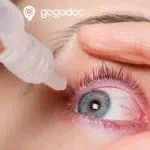What is Fungal skin infection?
It is a skin disease that is caused by fungus. This is also known as mycosis. These are most likely to develop in damp areas of the body. Such as the armpit, or feet. Some of the fungal infections are non-contagious and these infections are generally non- life-threatening.
Skin is the largest organ of your body. Its function is to protect your body from infections. As there are millions of species of fungi. We can find fungi in the dirt, on plants, on various surfaces, and even on your skin. Sometimes they can lead to skin problems like bumps and rashes.
Causes of fungal skin infection:
Fungi usually appear in moist areas of the body where skin surfaces meet, like between the toes, genital areas, and under the breasts.
The most common fungal skin infections are caused by yeasts. Fungi may spread from person to person, from animals to people, or very rarely, to a person from the soil.
You can also get infected from fungi if you come into contact with an infected person or animal. It can also pick up by sharing contaminated items such as towels, clothes, bedclothes, or hairbrushes.
Your also more likely to have a fungal skin infection if you:
- Have been taking antibiotics have diabetes
- Are pregnant
- Have a weakened immune system through illnesses, for example, HIV
Symptoms of fungal skin infection:
Depending on the type of fungus that causes fungal skin infection, the symptoms also differ. The fungus can affect just one area or several areas of your body.
Some of the symptoms of fungal skin infection include:
- Irritation
- Itching
- Blisters
- Swelling
- Redness
- Skin rashes
Along with some infections, your skin may become red, sore, and pustule.
What is the most common fungal skin infection?
There are different types of fungal infections. They are:
- Athletes foot
- Ringworm
- Yeast infection
- Nail fungus
- Oral Thrush
Athletes foot
This is a contagious fungal infection that affects the feet. The fungi grow in moist areas of the body and places such as shoes, socks, swimming pools, locker rooms, and public showers.
They’re often found in the summer and hot humid climates. Some of its symptoms include; itching, blisters, burning, peeling, cracking and scaly feet, red skin, and softened.
As a treatment, your doctor might give you antifungal medication to put o your skin or in severe cases another kind to take by mouth.
Ringworms
This can spread through direct contact with infected people or animals. This isn’t a worm but a fungal skin infection, in a ring-shaped rash with a winding, worm-like edge.
Heat and humidity can help spread the infection. Some of its symptoms include; red, circular, flat sore that can happen along with scaly skin. Usually, the ringworm treatment involves antifungal medication that you put on your skin. Also, you might need prescription medications to put on your skin or taken by mouth.
Yeast infection
Some of the signs of yeast infection in your skin include;
- Rashes
- Patches that ooze clear fluid
- Itching
- Burning
- Pimple-like bumps
Treatment for yeast infection depends on the infection. Medicated creams are used for most skin yeast infections.
Nail Fungus
This is caused when the fungus that’s normally in your fingernails or toenails overgrows. This condition usually begins as a white or yellow spot under the tip of your fingernail or toenail. As the fungal infection grows deeper, nail fungus may cause your nail to discolor, thicken, and crumble at the edges. Treatment depends on the severity of your condition and the type of fungus causing it.
Oral thrush
This happens when a yeast infection develops inside your mouth. This most often occurs in infants and toddlers. It causes white or yellowish bumps to form on the inner cheeks and tongue. This is usually harmless. This can easily be treated with the medications brought from the pharmacy.
Treatments for fungal skin infection:
The treatment depends on the cause of the infection and its severity. Some types of a viral skin infection may develop on their own within a few days or weeks. Generally, bacterial infections are often treated with topical antibiotics applied directly to the skin or with oral antibiotics. Your doctor may prescribe you to apply medicated creams to your skin to treat parasite skin infections. Also, medications are recommended to reduce the discomfort like anti-inflammatory drugs
‘Ask Gogodoc About’ is an educational series providing information on various symptoms, pains, and disorders. (*intended for educational purposes only. If you are experiencing symptoms, please reach out to book an online GP consultation with a Gogodoc GP.) Talk to a doctor online at a time that suits you from home with a phone or video appointment. You can easily book an appointment with GP.
Book a video consultation today! and get expert advice.



